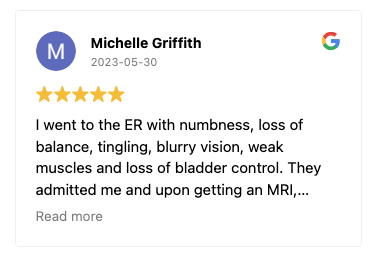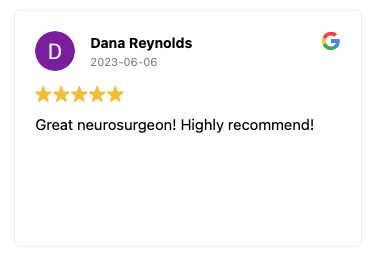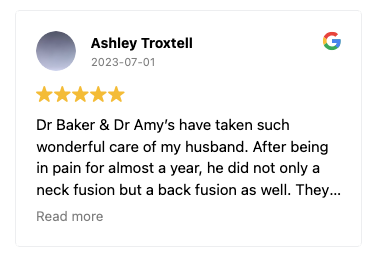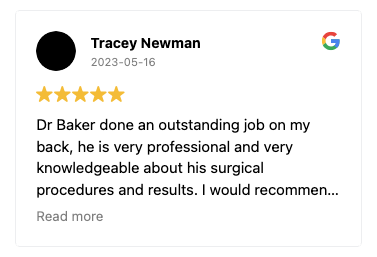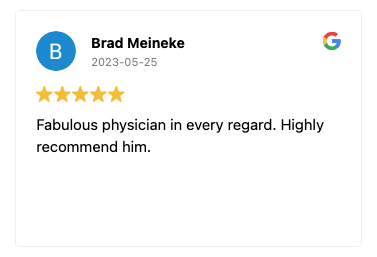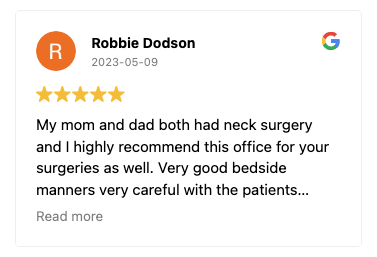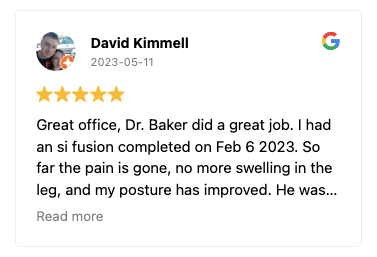Can a Herniated Disc Heal Itself?
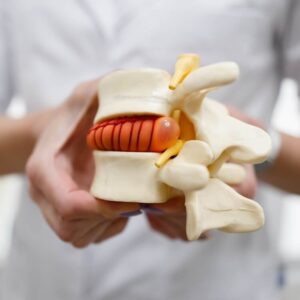
A common concern for anyone diagnosed with a herniated disc is whether the condition will improve without medical intervention. The good news is that, in many cases, a herniated disc can indeed heal on its own, though this process varies from person to person.
The body's natural healing process often works to reduce the size of the herniated portion of the disc, and symptoms may diminish over time as the body absorbs the disc material.
However, this doesn’t mean that everyone’s experience will be the same. Factors such as age, the severity of the disc herniation, and overall health play a role in how quickly, or even if, a herniated disc can fully heal. Some individuals may require more active treatment approaches to manage the pain and speed up recovery.
Request an Appointment
What is a Herniated Disc?
A herniated disc occurs when the soft, jelly-like center of a spinal disc pushes through a tear in its tough outer layer. Spinal discs act as cushions between the vertebrae in the spine, providing flexibility and absorbing shock. Over time, or due to injury, the outer layer weakens, allowing the inner disc material to bulge or break through. This can irritate nearby spinal nerves, leading to pain, numbness, and other symptoms.
Herniated discs occur most frequently in the lower back (lumbar spine) but can also affect the neck (cervical spine). Depending on the location of the herniation, symptoms may vary. For instance, a herniated lumbar disc often causes leg pain or sciatic nerve irritation, while a herniated disc in the neck may result in neck pain and discomfort radiating into the arms.
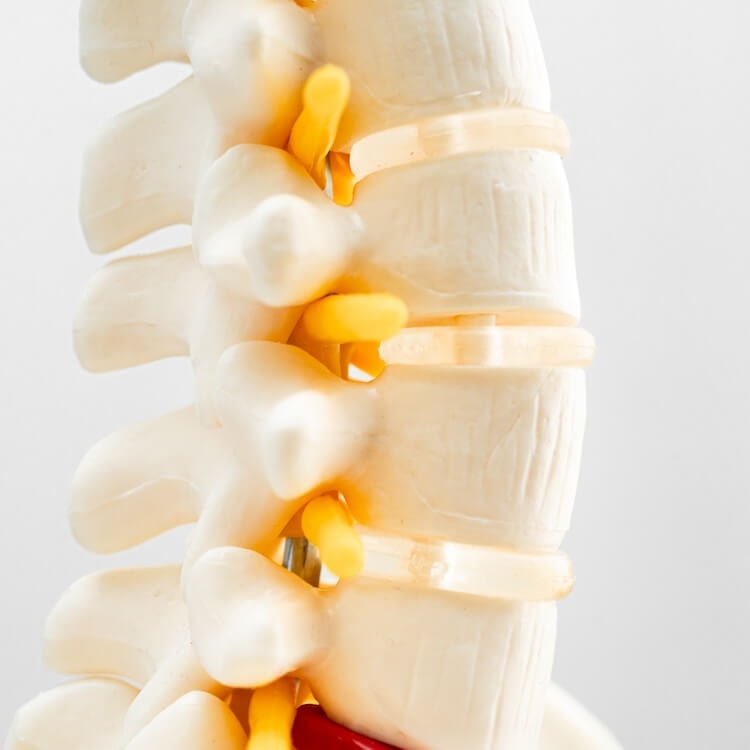
Common Symptoms of a Herniated Disc
The symptoms of a herniated disc can range from mild to severe. In some cases, individuals may not experience any noticeable symptoms at all, while others may face debilitating pain. Key symptoms include:
- Pain: Sharp or radiating pain is the most common symptom, especially in the back, legs, or arms, depending on the location of the herniation.
- Numbness and tingling: The pressure on the spinal nerves can cause a loss of sensation or a tingling feeling in the affected areas.
- Muscle weakness: Compression of the nerve root may weaken muscles, leading to difficulty lifting objects or walking.
- Trouble standing or moving: In more severe cases, individuals may have trouble with basic movements like standing, bending, or sitting due to the discomfort caused by the herniated disc.
Can a Herniated Disc Heal on Its Own?
The answer is yes, but with conditions. In most cases, the body can absorb the herniated portion of the disc over time, leading to a reduction in inflammation and nerve compression. This natural healing process can take weeks to months, during which pain and symptoms may gradually decrease.
One factor that helps in the disc healing process is the immune system. When the inner layer of the disc material leaks out, the body recognizes it as foreign material, triggering an immune response to clean it up. This aids in reducing the size of the herniated disc, relieving some pressure on the affected nerve roots.
Conservative Treatments for a Herniated Disc
Although many herniated discs heal naturally, conservative treatment methods are often recommended to speed up recovery and manage symptoms. Common nonsurgical treatment options include:
- Physical therapy: Strengthening the muscles around the spine and improving flexibility can help relieve pressure on the affected nerves.
- Pain medication: Over-the-counter pain relievers or steroid medications are often used to reduce inflammation and provide pain relief.
- Bed rest: Short periods of rest may help alleviate muscle spasms and discomfort, though prolonged inactivity is usually discouraged.
- Spinal injections: In cases of more severe pain, spinal injections may be recommended to reduce inflammation around the affected area.
Physical therapists play a vital role in helping individuals recover from a herniated disc. They guide patients through exercises designed to improve muscle strength and mobility while ensuring that proper posture and lifting techniques are used to prevent further injury.
When Surgery is Necessary for a Herniated Disc
While most herniated discs heal without surgery, some cases require more aggressive treatment. Spinal surgery may be considered if conservative treatments fail, or if there is significant nerve damage. Conditions like loss of bowel or bladder control or severe muscle weakness may indicate the need for surgical intervention.
Surgical options include:
- Discectomy: The removal of part or all of the herniated portion of the disc to relieve pressure on the nerve roots.
- Laminectomy: Removing a portion of the spinal canal to create space and relieve pressure on the spinal nerves.
- Spinal fusion: In more severe cases, two or more vertebrae may be fused together to stabilize the spine after a disc herniation.
What Happens if a Herniated Disc Doesn’t Heal?
If a herniated disc doesn’t heal properly, long-term issues like chronic pain or permanent nerve damage may occur. Some individuals may continue to experience symptoms such as persistent muscle weakness, leg pain, or neck pain. Nerve tissue can be sensitive to prolonged compression, so untreated herniation may lead to worsening symptoms over time.
For those who experience ongoing issues despite conservative treatments, advanced diagnostic tests like nerve conduction studies or a CT scan may be necessary to evaluate the extent of the damage. In some cases, spinal injections or other interventional treatments may be recommended to manage pain and reduce inflammation.
Managing Pain During the Healing Process
During the healing process, managing pain is essential to maintaining quality of life. Over-the-counter medications like ibuprofen and naproxen can help reduce inflammation, while prescription medications may be necessary in more severe cases. Other strategies for managing pain include:
- Heat and cold therapy: Applying heat or ice packs to the affected area can help alleviate discomfort.
- Gentle stretching: Stretching the back and leg muscles can relieve tension and improve flexibility.
- Maintaining a healthy weight: Reducing extra weight can alleviate pressure on the spine, improving overall outcomes.
It’s also crucial to maintain good posture and avoid activities that put excess strain on the spine, such as improper lifting or twisting movements.
Preventing Future Disc Herniations
While it’s possible for a herniated disc to heal, preventing future issues is equally important. Adopting proper body mechanics and strengthening the core muscles can reduce the likelihood of another disc herniation. Some tips for preventing further injuries include:
- Proper lifting techniques: Always bend at the knees and use your legs—not your back—when lifting heavy objects.
- Regular exercise: Engage in activities that strengthen the core and improve flexibility.
- Maintain a healthy weight: Excess weight increases the strain on your spine and spinal discs.
Avoiding activities that stress the spine, such as heavy lifting or improper posture, is crucial to protecting your spinal column and preventing future herniations.
The question of whether a herniated disc can heal on its own doesn’t have a simple, one-size-fits-all answer, but in many instances, the body does have remarkable mechanisms to recover from a disc herniation. The healing process, however, isn’t instantaneous—it can take weeks or even months, and during this time, patience is essential. The body’s immune system can gradually absorb the disc material that’s causing nerve compression, reducing inflammation and, ultimately, easing the pain. Yet, this doesn’t always mean you should sit back and wait for nature to take its course.
For most people, a combination of conservative treatments such as physical therapy, lifestyle modifications, and pain management strategies can greatly aid the healing process. Regular exercise, particularly under the guidance of a professional, plays a crucial role in strengthening the muscles that support the spine, helping to relieve the pressure on the spinal discs and improve overall outcomes. Pain relief techniques, from over-the-counter medications to more specialized interventions like spinal injections, can also be part of a comprehensive recovery plan. The goal is not only to relieve pain but also to promote long-term healing and prevent future herniations.
However, it’s also true that not all herniated discs heal on their own. In some cases, the herniated portion of the disc may be too large, or the compression on the spinal nerves may be too severe to allow for full recovery without medical intervention. If symptoms persist despite conservative treatments, or if there is significant nerve damage, more advanced options such as spinal surgery may be necessary. Surgical treatments like discectomy or spinal fusion are designed to address the underlying cause of the pain and restore function.
That said, prevention is often the best form of treatment. Learning proper body mechanics, maintaining a healthy weight, and building a strong core can go a long way in preventing future disc herniations. Adopting habits such as using the right lifting techniques, avoiding repetitive strain on the spine, and staying active are simple yet effective ways to protect the spine and keep it healthy.
The key takeaway is that each person’s journey with a herniated disc is unique. While many individuals can experience significant relief and recovery through non-invasive means, others may require a more hands-on approach. No matter the treatment plan, the ultimate goal is to alleviate symptoms, restore normal function, and enable individuals to return to an active, pain-free life.
Neurosurgical Procedures
A neurosurgeon chooses a specific neurological surgery depending on the particular neurological disorder and the patient’s condition. There are different neurological surgeries, but the most common ones are here.
Craniotomy
Many neurological concerns, mainly head strokes and brain tumors, are treated through craniotomy. In this surgery, a surgeon removes a part of the skull to access the targeted area. It’s a surgical opening into the skull called open surgery. These days, surgeons prefer minimally invasive techniques to perform this procedure.
Ventricular Shunting
A ventricular shunt is a narrow plastic tube inserted in the brain to drain excess cerebrospinal fluid (CSF). When too much CSF is present in the brain, it causes pressure and pain. Thus, it’s better to go for ventricular shunting to relieve this pain. It is indeed one of the most common types of neurosurgery.
Chiari Decompression
Chiari malformation is a condition in which the brain tissues of the patient extend to the spinal canal and causes an imbalance. Thus, Chiari decompression surgery creates more brain space and widens the foramen magnum. It results in an improvement in coordination and balance.
Epilepsy Neurosurgery
A patient with severe epileptic seizures has to go through epilepsy neurosurgery. In this surgery, a neurosurgeon removes and modifies a part of the brain to relieve the patient. With this surgery, a neurosurgeon treats severe and fatal seizures. Open epilepsy surgeries take 3-4 hours at least, while robotic surgeries don’t take this much time.
Anterior Cervical Discectomy
Patient with herniated disc requires anterior cervical discectomy to relieve their neck pain. Especially for cervical herniated discs, when it becomes impossible for non-surgical treatment methods to control pain, this neurosurgical procedure becomes mandatory. The operative time for this surgery lies between 2 to 4 hours.
Lumbar Puncture
Lumbar puncture is one of the simplest neurosurgical procedures, also called a spinal tap. A needle is placed between the lumbar vertebrae to remove a sample of cerebrospinal fluid. It is a diagnostic procedure to check any signs linked with disorders of the central nervous system. Along with being simplest, it is also the safest surgical technique with minimum to no risks involved in it.
Minimally Invasive Spine Surgery
Minimally invasive spine surgeries are carried out to stabilize vertebral bones and spinal joints and relieve spinal nerve pain. This surgery involves less pain and less tissue damage, including fewer incisions. Moreover, the success rate of this surgery is more than 90%, offering countless benefits also.
Risks Linked With Neurosurgery
- Neurosurgical risks and complication rates vary based on several factors, including the kind of surgery and the patient’s condition. A study claims that 14% of neurosurgery procedures result in complications. The following complications may occur in various patients, but it’s important to remember that each patient will experience these risks at a different rate and degree.
- Aseptic meningitis
- Severe bleeding requiring transfusion
- Need for mechanical breathing
- Intracranial hemorrhage
- Hyper perfusion syndrome
- Cranial nerve palsies
- Ischemia
- Seizures
- Leaked cerebrospinal fluid
Craniotomy
Many neurological concerns, mainly head strokes and brain tumors, are treated through craniotomy. In this surgery, a surgeon removes a part of the skull to access the targeted area. It’s a surgical opening into the skull called open surgery. These days, surgeons prefer minimally invasive techniques to perform this procedure.
Ventricular Shunting
A ventricular shunt is a narrow plastic tube inserted in the brain to drain excess cerebrospinal fluid (CSF). When too much CSF is present in the brain, it causes pressure and pain. Thus, it’s better to go for ventricular shunting to relieve this pain. It is indeed one of the most common types of neurosurgery.
Chiari Decompression
Chiari malformation is a condition in which the brain tissues of the patient extend to the spinal canal and causes an imbalance. Thus, Chiari decompression surgery creates more brain space and widens the foramen magnum. It results in an improvement in coordination and balance.
Epilepsy Neurosurgery
A patient with severe epileptic seizures has to go through epilepsy neurosurgery. In this surgery, a neurosurgeon removes and modifies a part of the brain to relieve the patient. With this surgery, a neurosurgeon treats severe and fatal seizures. Open epilepsy surgeries take 3-4 hours at least, while robotic surgeries don’t take this much time.
Anterior Cervical Discectomy
Patient with herniated disc requires anterior cervical discectomy to relieve their neck pain. Especially for cervical herniated discs, when it becomes impossible for non-surgical treatment methods to control pain, this neurosurgical procedure becomes mandatory. The operative time for this surgery lies between 2 to 4 hours.
Lumbar Puncture
Lumbar puncture is one of the simplest neurosurgical procedures, also called a spinal tap. A needle is placed between the lumbar vertebrae to remove a sample of cerebrospinal fluid. It is a diagnostic procedure to check any signs linked with disorders of the central nervous system. Along with being simplest, it is also the safest surgical technique with minimum to no risks involved in it.
Minimally Invasive Spine Surgery
Minimally invasive spine surgeries are carried out to stabilize vertebral bones and spinal joints and relieve spinal nerve pain. This surgery involves less pain and less tissue damage, including fewer incisions. Moreover, the success rate of this surgery is more than 90%, offering countless benefits also.
Dr. Abdul Baker - An Expert Neurosurgeon in Texas
Every neurosurgery has its complications; thus, a patient must choose the best neurosurgeon for himself. Dr. Abdul Baker is one of the most experienced and qualified neurosurgeons in Texas, treating patients for more than 16 years. People in Sherman, Plano, and nearby areas trust him for every kind of neurosurgery due to his surgical procedures’ 100% success rate. You may visit him if you need any consultancy or treatment regarding your brain and spine disorders.


Dr. Baker specializes in neurosurgery, neurosurgical spine surgery, neurotrauma, brain tumors, spinal tumors, and peripheral nerve damage treatment.
